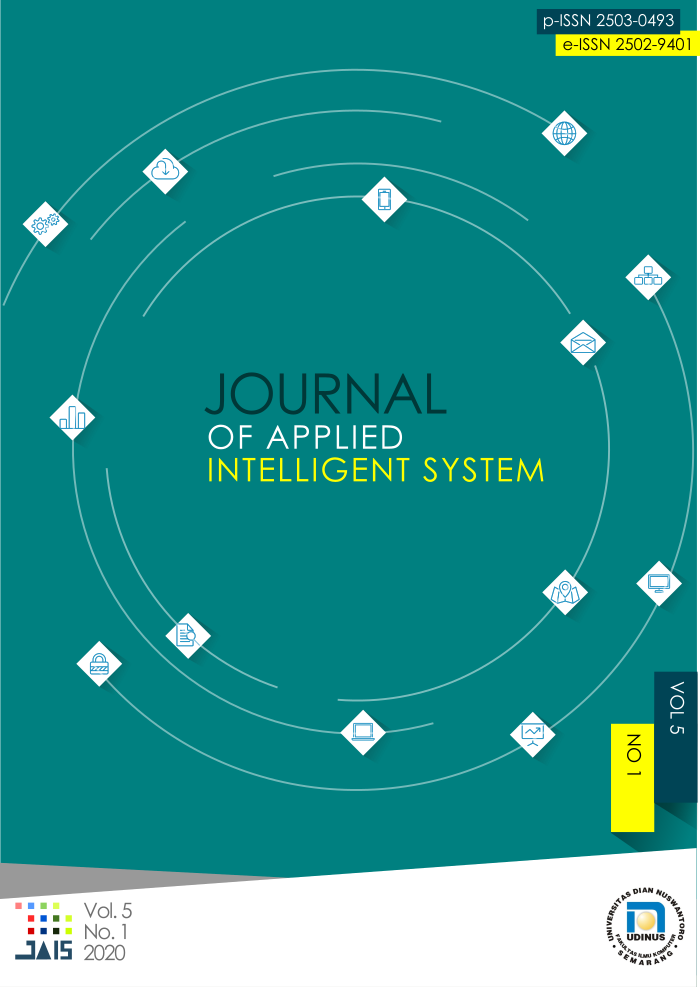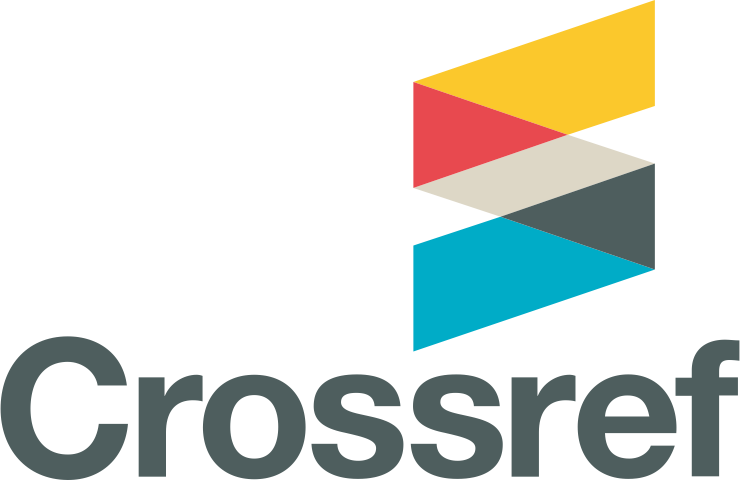Sequential Model for Mapping Compound Emotions in Indonesian Sentences
DOI:
https://doi.org/10.33633/jais.v5i1.4264Abstract
This research proposes mapping Indonesian sentences with single and multiple structures into emotion classes based on a multi-label classification process. The result of this research can apply in various fields, including the development of facial expressions in virtual character animation. Applications in other fields are facial expression analysis, human-computer interaction systems, and other virtual facial character system applications. In previous research, the classification process used for emotion mapping was usually based only on the frequency of occurrence of adjectives. The resulting emotion classes are less representative of sentence semantics. In this research, the proposed sequential model can take into account the semantics of the sentence so that the results of the classification process are more natural and representative of the semantics of the sentence. The method used for the emotion mapping process is multi-label text classification with continuous values between 0-1. This research produces the tolerant-method that utilizes the error value to deliver accuracy in the model evaluation process. The tolerant-method converts the predicted-label, which has an error value less than or equal to the error-tolerant value, to the actual-label for better accuracy. The model used in the classification process is a sequential model, including one-dimensional Convolution Neural Networks (CNN) and bidirectional Long Short-Term Memory (LSTM). The CNN model generates feature maps of each input in a partial way. Meanwhile, bidirectional LSTM captures information from input data in two directions. Experiments were performed using test data on Indonesian sentences. Based on the experimental results, bidirectional LSTM can produce an accuracy of 91% in the 8: 2 data portion and error-tolerant of 0.09.Keywords : Sequential Model, Mapping Compound Emotions, Sentence Semantics, Indonesian SentencesReferences
T. I. Kusumawati, “Komunikasi Verbal Dan Nonverbal”, J. Pendidik. dan Konseling, vol. 6, no. 2, pp. 83–98, 2016.
J. E. Prawitasllri, “Mengenal Emosi Melalui Komunikasi Nonverbal”, Bul. Psikol., vol. 3, no. 1, pp. 27–43, 2016, DOI: 10.22146/bpsi. 13384.
Vivi Triyanti, Yassierli, Hardianto Iridiastadi, “Basic Emotion Recognition using Automatic Facial Expression Analysis Software”, Jurnal Optimasi Sistem Industri, Vol. 18, No. 1, 2019, DOI:https://doi.org/10.25077/josi.v18.n1.p55- 64.2019.
P. Ekman and D. Cordaro, “What is Meant by Calling Emotions Basic,” Emot. Rev., vol. 3, no. 4, pp. 364–370, Oct. 2011, doi: 10.1177/1754073911410740.
W. Agastya and Aripin, “Pemetaan Emosi Dominan pada Kalimat Majemuk Bahasa Indonesia Menggunakan Multinomial Naïve Bayes (Mapping Dominant Emotion in Indonesian Compound Sentences Using Multinomial Naïve Bayes)”, JNTETI (Jurnal Nas. Tek. Elektro dan Teknol. Informasi), vol. 9, no. 2, pp. 171–179, 2020, DOI: https:// doi.org/10.22146/jnteti.v9i2.157.
S. Widodo, “Bahasa Indonesia Menuju Bahasa Internasional”, Badan Pengembangan dan Pembinaan Bahasa, Kementerian Pendidikan dan Kebudayaan, 2013. http://badanbahasa. kemdikbud.go.id/lamanbahasa/ content/bahasa -indonesia-menuju-bahasa-internasional [accessed Mar. 01, 2020].
Y. Kim, "Convolutional Neural Networks for Sentence Classification", in Proceedings of the 2014 Conference on Empirical Methods in Natural Language Processing (EMNLP), 2014, pp. 1746–1751, DOI: 10.1109/CLEI.2017. 8226381. P. Zhou, Z. Qi, S. Zheng, J. Xu, H. Bao, and B. Xu, “Text classification improved by integrating bidirectional LSTM with two-dimensional max pooling”, in COLING 2016 - 26th International Conference on Computational Linguistics, Proceedings of COLING 2016: Technical Papers, 2016, vol. 2, no. 1, pp. 3485–3495.
Aditya Jain, Gandhar Kulkarni and Vraj Shah, "Natural Language Processing", International Journal of Computer Sciences and Engineering (IJCSE), Vol. 6, Issue 1, pp. 161-167, 2018.
Greg Van Houdt, Carlos Mosquera and Gonzalo Napoles, “A Review on The Long Short-Term Memory Model”, Artificial Intelligence Review (2020), springer nature. com, published 13 May 2020.
D. Rahmawati and M. L. Khodra, "Automatic multi-label classification for Indonesian news articles", 2015 International Conference on Advanced Informatics: Concepts, Theory, and Applications, 2015, DOI: 10.1109/ICAICTA. 2015.7335382.
Ivana Clairine Irsan and Masayu Leylia Khodra, "Hierarchical multi-label news article classification with distributed semantic model-based features", International Journal of Advances in Intelligent Informatics, Vo. 5, No. 1, pp. 40-47, 2019, DOI: https://doi.org/10. 26555/ijain.v5i1.168.
Hui-Huang Zhao and Han Liu," Multiple Classifiers Fusion and CNN Feature Extraction for Handwritten Digits Recognition", Granular Computing, springernature.com, published 22 February 2019.
Yingying Wang, Yibin Li, Yong Song, and Xuewen Rong, "The Influence of The Activation Function in a Convolution Neural Network Model of Facial Expression Recognition", Applied Sciences 2020 (www.mdpu.com/journal/applsci), DOI:10.3390/app10051897, Published 10 March 2020.
Feiping Nie, Zhanxuan Hu, and Xuelong Li, “An Investigation for Loss Functions Widely Used in Machine Learning”, Communication in Information and System, Volume 18, Number 1, pp. 37-52, 2018.
Ivo Duntsch and Gunther Gediga, "Confusion Matrices and Rough Set Data Analysis", Journal of Physics: Conf. Series 1229 (2019), pp. 1-6, 2019, DOI:10.1088/1742-6596/1229/ 1/01205.
Ahmad Hoirul Basori, Hani Moaiteq Abdullah AlJahdali, “Emotional Facial Expression Based on Action Units and Facial Muscle”, International Journal of Electrical and Computer Engineering (IJECE), Vol. 6, No. 5, October 2016, pp. 2478-2487, DOI: 10.11591/ ijece.v6i5.12135.
Downloads
Published
Issue
Section
License
- Authors retain copyright and grant the journal right of first publication with the work simultaneously licensed under a Creative Commons Attribution License that allows others to share the work with an acknowledgment of the work's authorship and initial publication in this journal.
- Authors are able to enter into separate, additional contractual arrangements for the non-exclusive distribution of the journal's published version of the work (e.g., post it to an institutional repository or publish it in a book), with an acknowledgment of its initial publication in this journal.
- Authors are permitted and encouraged to post their work online (e.g., in institutional repositories or on their website) prior to and during the submission process, as it can lead to productive exchanges, as well as earlier and greater citation of published work (See The Effect of Open Access).









